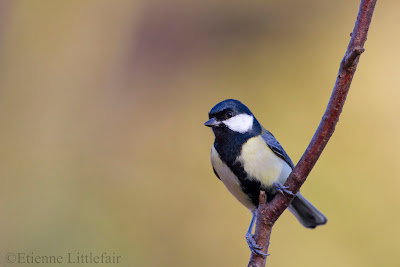Cusuco National Park is a relatively small montane protected area in Honduras, the habitat is mostly cloud forest, and is home to such species as the resplendent quetzal, a most remarkable bird. It is also home to some lesser known, equally stunning and unfortunately more threatened wildlife. Namely amphibians. The park has around 7 endemic species of amphibian and in my time working there over summer 2012 I was fortunate enough to photograph some of these.
Firstly a habitat shot, the amphibians in Cusuco and in many areas around the world are focussed around wetland areas, which in this case meant mountain streams.
One of the more frequently encountered species (non the less declining) Plectrohyla dasypus - one of the endemics.
The two shots below shot Plectrohyla exquisita, the Cusuco giant treefrog in its habitat.
Sometimes it can be nice to show amphibians or reptiles in their habitat rather than taking macro shots, to do this in dim rainforest conditions is often challenging as it requires the use of natural light. So here I used a tripod placed in the stream, and a wide angle as opposed to a macro lens, the exposure time for the below shot was 5.0 seconds - luckily some frogs will sit remarkably still. I also used a little fill flash to bring out detail in the foreground of the photo.
This species () is endemic to Cusuco and is classed as Critically endangered by the IUCN. Threats include ongoing habitat loss and chytrid fungus, a fungus that is driving declines in many species of amphibian globally.
One of the endemic salamanders Bolitoglossa diaphora, a Cusuco salamander.
Finally a fantastic example of an amphibian that exploits another semi aquatic habitat found across the neo-tropics, bromeliads. This salamander is Cryptotriton nasalis, so named for the large nostrils evident in this picture. Usually this species is found high up in the forest canopy where bromeliads are prolific. This was a chance find at night in a low lying bromeliad axil.
It will be a great shame if any of these beautiful species become extinct, and so as a conservationist I would urge readers to be mindful of amphibians, not necessarily tropical species, but those species you find at home, wherever that may be. Simple acts such as digging a pond in your garden, or not using pesticides in your flowerbeds can throw a lifeline to struggling frogs, toads and newts, creatures that children the world over find fascinating and can spend hours being entertained by.
Any comments or questions are welcomed as usual,
Regards,
Etienne



















